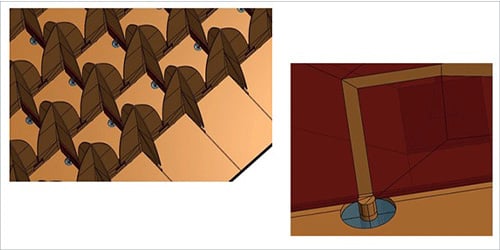ESTEAM by TICRA
Design of General Antennas and Scattering by Large Structures
Real-world antennas don’t exist alone – instead, they’re used in proximity to other antennas and often mounted on a structure or platform. Predictions of antenna performance may depend on accurate modeling of antenna placement. This type of prediction is what ESTEAM is designed for.
Parameterized objects are available to build models of various geometries and antennas, and if combined with TICRA’s GRASP tool – also available via the APA – a wide range of parameterized reflector geometries are also available. More complex structures may be imported through CAD files in STEP or IGES formats.








